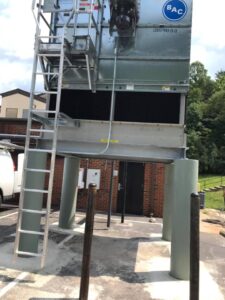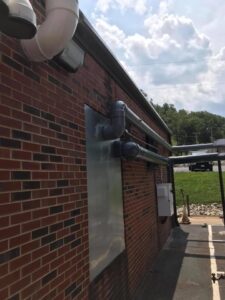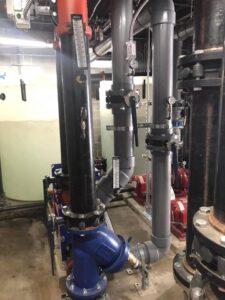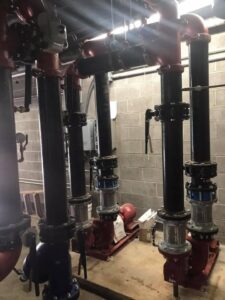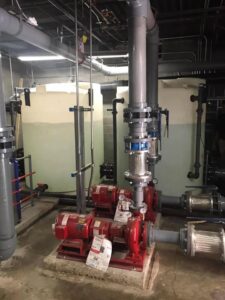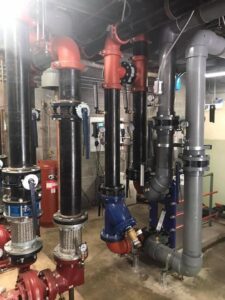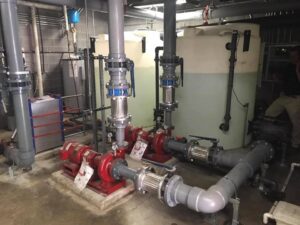It’s already September and this is the perfect time to begin preparing our commercial and industrial heating systems to keep us warm through the winter as well as our industrial processes running. So now is the time to schedule your Winter PM and Checkup of your (1) Commercial Boiler, (2) Makeup Air Units, (3) Roof Top Units and (4) GeoThermal Units.
BOILERS
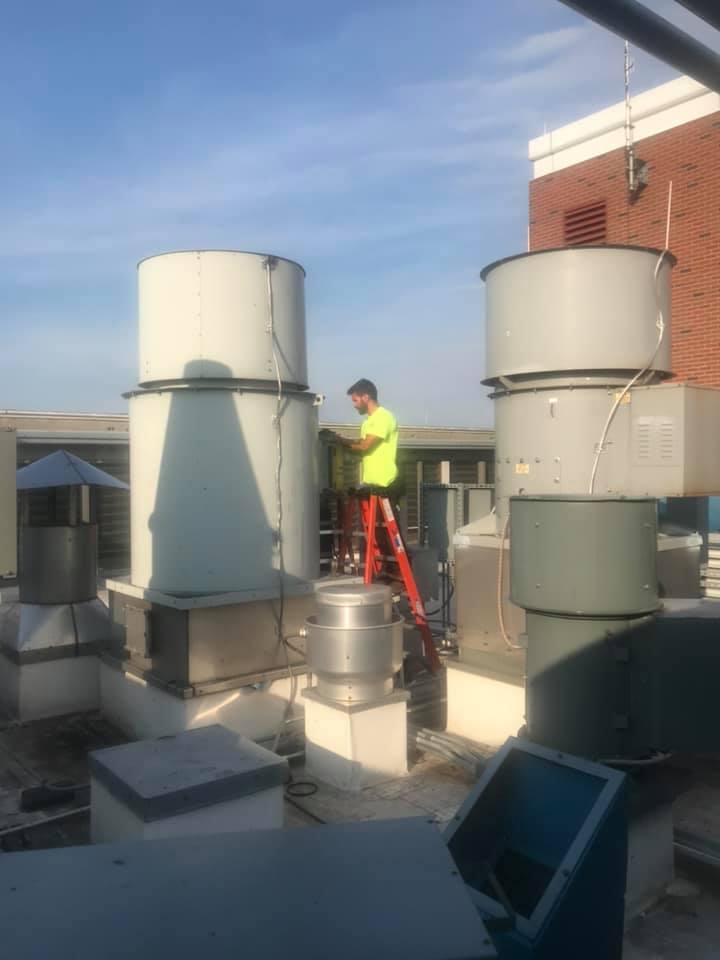 Commercial boilers are pressurized systems that burn combustible fuel or use electricity to heat water that is used to provide heating in your building or for process. Some types of boilers use the hot water itself, while others heat and convert the water to steam. Depending on your company’s product and processes, commercial boilers can be used for heating but also for production and manufacturing.
Commercial boilers are pressurized systems that burn combustible fuel or use electricity to heat water that is used to provide heating in your building or for process. Some types of boilers use the hot water itself, while others heat and convert the water to steam. Depending on your company’s product and processes, commercial boilers can be used for heating but also for production and manufacturing.
Depending on the type of boiler and brand, there are different types of audits, maintenance and tuning of certain items that should be done. It is best to follow each manufacturer’s specific recommendations.
Some of the more common checks for Commercial Boilers include:
- Check and tests low and high gas pressure safeties
- Inspect and clean all burners of any modulating-condensing boilers
- Inspect all manhole gaskets for leaks;
- Inspect all refractory systems;
- Inspect and test all safety valves;
- Clean and rebuild low water cut-off;
- Recalibrate all operating controls;
- Inspect and tighten electrical terminals,
- Check low water cutoffs;
- Inspect all flue chimneys and examine the flue gasses;
- Tune boiler for optimal boiler efficiency;
- Inspection of vent pipe for white, powdery residue;
- Examination of all flame-sensing rods, spark rods to ensure they are properly gapped;
- Check all fans and blowers for building of dirt;
- Check of all electrical connections;
- Check of block valves and bleed valves for any leaks;
- Monitor oxygen, carbon monoxide and carbon dioxide levels.
*This is not a complete list but demonstrates the importance of regularly scheduled examination of your equipment to increase the lifespan and to help prevent downtime.
Make-Up Air Units
Make-up air units are designed to “make up” the air in building that has been removed due to process exhaust fans. The Makeup Air Unit (MAU) pulls in fresh, tempered air from outside to replace existing air that cannot be recirculated inside. A MAU facilitates ventilation to improve the Indoor Air Quality (IAQ) to help protect the health of those inside by removing contaminants in the air and providing a comfortable temperature. This has become even more essential and valued during the Covid pandemic, as frequent air exchanges with proper ventilation induced by the Makeup Air Unit can help reduce spread of viruses.
As the winter brings freezing temperatures, a PM of your Make-up Air Unit is highly recommended because once the outside air drops below 35°, the system’s controls should initiate shutoff to prevent catastrophic failure of the system.
Some of the common checks for Make-up Air Units include:
- Check belt drives for wear, tension, alignment and dirt accumulation.
- Belt tension should be measured according to manufacturer’s recommendations to avoid fan failure or motor bearings, squealing, slippage and overheated sheaves.
- Clean motor to remove dirt, grease building and add lubrication if needed.
- Cleaning of the fan assembly to remove any buildup of oil and dirt.
- Check and clean all bearings, as well as add lubrication according to manufacturer’s recommendations.
- Inspect all cooling/heating coils for corrosion or leaks, clean coils when needed.
- Remove the drop leg of the gas line and remove dirt, liquid and debris accumulate.
- Check the flue to make sure it’s operational and clear of debris.
- Check the heat exchange for cracks, to avoid carbon monoxide and other flue gasses being blown into the occupied space.
- Check and clean the burn, as well as the manifold and burner assembly.
- Check all the sensor and safety devices to make sure all is operational.
Rooftop Units
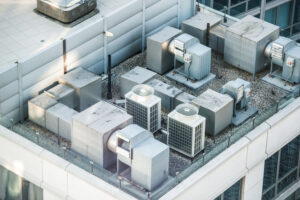 An air handler designed for outdoor use, typically on roofs, is known as a Rooftop Unit (RTU). Package and Heating Air Units can be roof mounted, ground mounted or suspended. They can be a constant volume or variable air volume. They provide a heating and cooling solution in one unit.
An air handler designed for outdoor use, typically on roofs, is known as a Rooftop Unit (RTU). Package and Heating Air Units can be roof mounted, ground mounted or suspended. They can be a constant volume or variable air volume. They provide a heating and cooling solution in one unit.
To prepare for winter where your rooftop units are exposed to the elements (cold, wind, ice, rain, snow and sleet), it’s essential to ensure your RTU is running efficiently for optimal performance. Considering their remote location on the rooftop, it may be difficult to see or hear the signs of any potential issues or impending failure and downtime.
Some of the Common Checks for Roof Top Units include:
- Check coolant levels and check the refrigerant charge.
- Inspect and clean air filters and inlet screens, as well as the functionality of the damper.
- Inspect fans, housing and motor to make sure all fans are operational, clean, without cracks or damage.
- Inspect the heat exchangers to prevent gases contaminate the building’s air supply.
- Inspect the burners, igniter and combustion.
- Check the belts for wear, proper tension and pulley alignment
- Check and clean the coils to remove all residue, dirt and debris,
- Clean drainage of all clogs to prevent water damage.
- Check for any voltage imbalance and amperage to prevent overheating and premature motor failure, as well as keep energy costs low.
Water Source / GeoThermal Units
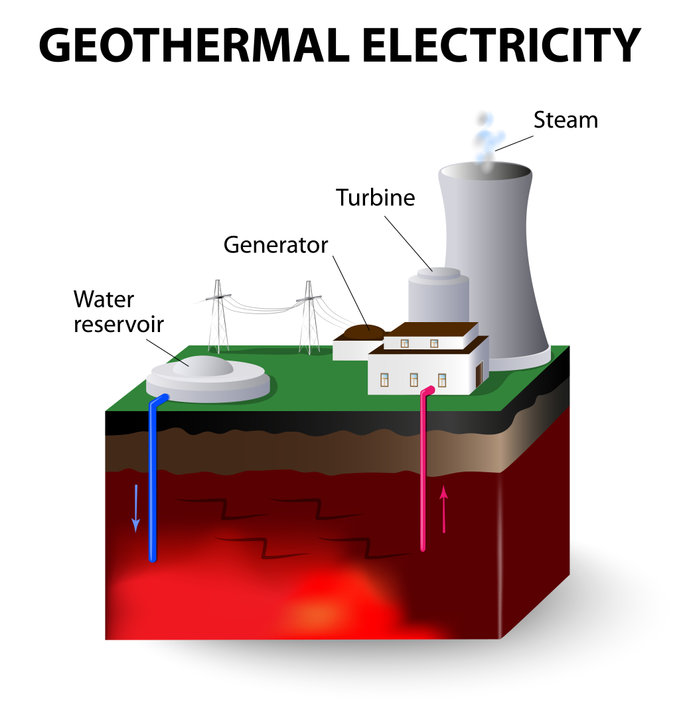 A geothermal heat pump or ground source heat pump (GSHP) is a central heating and/or cooling system that transfers heat to or from the ground. It uses the earth as a heat source (in the winter) or a heat sink (in the summer). Ground source heat pumps harvest heat absorbed at the Earth’s surface from solar energy. Water Source Heat Pumps are typically used in a boiler/cooling tower application.
A geothermal heat pump or ground source heat pump (GSHP) is a central heating and/or cooling system that transfers heat to or from the ground. It uses the earth as a heat source (in the winter) or a heat sink (in the summer). Ground source heat pumps harvest heat absorbed at the Earth’s surface from solar energy. Water Source Heat Pumps are typically used in a boiler/cooling tower application.
Geothermal energy, also known as “ground source” energy, is a viable renewable energy source in Kentucky. Geothermal heat pumps are among the most efficient and comfortable heating and cooling technologies available because they use the earth’s natural heat to provide heating, cooling, and often, water heating.
Kentucky utilizes the highest percentage of all Water Source Heat Pumps in all of the United States, as our state is rich in limestone. Limestone is an efficient heat storage and transfer material—so it’s even more efficient to use geothermal heating and cooling here than in many other places!
Some common checks for Water Source and GeoThermal Units include:
- Lubricate mechanical components to reduce friction and resistance
- Clear any obstructions from the condensate drain
- Test heat pump controls
- Check the air filter for dirt
- Clean the condenser coil and fan as well as check for stability, amp draw, and vibrations.
- Inspect belts, pulleys, for any alignment issues.
- Check blower wheels and motors for restricted airflow
- Check amperage of motor
- Measure refrigerant levels and recharge the unit if necessary.
- Inspect the refrigeration metering device to ensure it’s operational
- Inspect electrical wiring and connections
Commercial Controls Installation, Services & Maintenance
*During all Fall Preventative Maintenance visits, we also include a thorough check of all HVAC controls’ settings, to ensure remote monitoring is functional, accurate and fully responsive.
Controls provide an integrated system of hardware, technology and programming to automate the functionality of the company’s buildings, factories and offices. Control technology integrates every aspect of the building from the security systems, locks, lighting, heating, ventilation, and air conditioning (HVAC), refrigeration (HVACR), energy management, and fire protection.
To learn more about our Controls technology and the benefits for your company or organization, please read: https://cpslex.com/how-controls-create-effective-comfort-process-for-your-business/
Call Danny, our certified inhouse controls expert, and our team at CPS to for your all business and industrial controls setup and maintenance.
CASE STUDY: HVAC Upgrade at W. R. Castle Memorial Elementary School of Johnson County School District in Kentucky
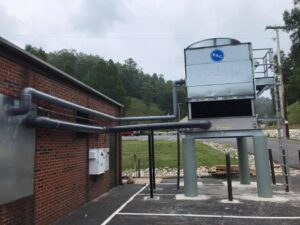 Recently Comfort and Process Solutions completed a full HVAC upgrade and renovation at the W.R. Castle Elementary School in Johnson County, Kentucky. Their existing equipment was more than 35 years’ old, so our team worked over the summer months to upgrade their heating and cooing processes with a new energy-saving boiler and an addition of a cooling tower. This new system will be more efficient to run, thus reducing their carbon footprint (which results in lower utility bills) and cleaner air for the students and staff within the buildings. The project, funded by the CMTA Energy Solutions, was started in mid-May and completed in early August right on time before classes were back in session.
Recently Comfort and Process Solutions completed a full HVAC upgrade and renovation at the W.R. Castle Elementary School in Johnson County, Kentucky. Their existing equipment was more than 35 years’ old, so our team worked over the summer months to upgrade their heating and cooing processes with a new energy-saving boiler and an addition of a cooling tower. This new system will be more efficient to run, thus reducing their carbon footprint (which results in lower utility bills) and cleaner air for the students and staff within the buildings. The project, funded by the CMTA Energy Solutions, was started in mid-May and completed in early August right on time before classes were back in session.
We at Comfort and Process Solutions are committed to improving air quality, reducing utility costs and providing efficient heating and cooling for many of the school districts and universities in the Commonwealth. With our MERV rated air filters and our new clean air services including Air Scrubbers, Ultraviolet Lights, and GPS Air Filtration*, we are working with local commercial, industrial, education and healthcare organizations to reduce the spread of virus, as well as eliminate a large percentage of dust, dander, bacteria, allergens and air pollution from the circulated indoor air. Call us for an estimate.
“I would like to take a few minutes to tell you about Confront Process Solutions (CPS). They were awarded the HVAC Contract for one of my Elementary’s and their Professionalism is second to none. Jeff Fristoe goes above and beyond the call of duty to make you feel like you and your schools are the most important project his company has. Their work is First class and to perfection, Jeff expects nothing less and this shows in the work his guys produce. I would MOST DEFINITELY recommend his company to anyone needing HVAC work. I promise, you will get nothing but the BEST when selecting CPS. Once Jeff works for you, you become part of his family and if you need anything just pick up the phone and he will be there to make sure you are working and satisfied.” – Tim Adams, Director of District Operations of Johnson County Schools
*GPS NPBI technology helps clean indoor air. This patented technology produces a high concentration of positive and negative ions, delivering them to the space via the ventilation system. Within the air stream, ions attach to particles, where they combine, become larger and are more easily filtered from the air.
NEW SERVICE: Variable Air Volume (VAV)
What is VAV? Variable air volume (VAV) is a type of heating, ventilating, and/or air-conditioning (HVAC) system. Unlike constant air volume (CAV) systems, which supply a constant airflow at a variable temperature, VAV systems vary the airflow at a constant temperature. Variable air volume (VAV) systems enable energy-efficient HVAC system distribution by optimizing the amount and temperature of distributed air.
VAV systems supply air at a variable temperature and airflow rate from an air handling unit (AHU). Because VAV systems can meet varying heating and cooling needs of different building zones, these systems are found in many commercial buildings. Unlike most other air distribution systems, VAV systems use flow control to efficiently condition each building zone while maintaining required minimum flow rates as well as regulate negative and positive air pressure.
Comfort and Process Solutions have recently installed VAV in local area hospitals, where the volume of negative and positive pressure is essential, especially in operating rooms. Why? Negative or positive pressure rooms are a necessary part of a wide range of medical and research environments, as they help maintain clean conditions in the smallest clinic to the largest hospital.
Positive pressure rooms maintain a higher pressure inside the treated area than that of the surrounding environment. This means air can leave the room without circulating back in. In this way, any airborne particle that originates in the room will be filtered out. Germs, particles, and other potential contaminants in the surrounding environment will not enter the room. In medical settings, a positive pressure room (protective environment) allows staff to keep vulnerable patients safe from infections and disease.
In contrast, a negative pressure room uses lower air pressure to allow outside air into the segregated environment. This traps and keeps potentially harmful particles within the negative pressure room by preventing internal air from leaving the space. Negative pressure rooms in medical facilities isolate patients with infectious conditions (AIIR) and protect people outside the room from exposure.
A Big Thank You to our Hard-working & Dependable Team
 At Comfort and Process Solutions, we are really blessed with a service team who will go above and beyond for our customers and their fellow team members. During the past Summer, our team has worked very hard to meet the demands of a very busy season with an exceptionally high number of service calls in July and August. Working long hours, often in the elements of these hot, humid days, they have displayed exceptional customer service, attention to detail and prompt response times without complaint. Our success is in a big part to our hard-working team, and we want to say thank you to all of our service technicians for their invaluable contribution.
At Comfort and Process Solutions, we are really blessed with a service team who will go above and beyond for our customers and their fellow team members. During the past Summer, our team has worked very hard to meet the demands of a very busy season with an exceptionally high number of service calls in July and August. Working long hours, often in the elements of these hot, humid days, they have displayed exceptional customer service, attention to detail and prompt response times without complaint. Our success is in a big part to our hard-working team, and we want to say thank you to all of our service technicians for their invaluable contribution.


